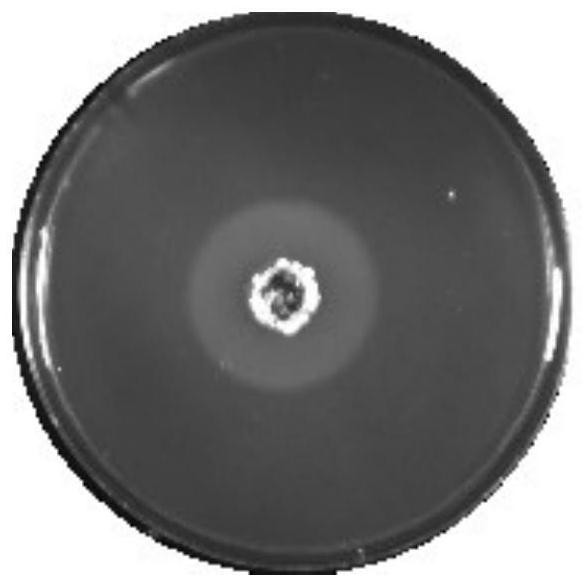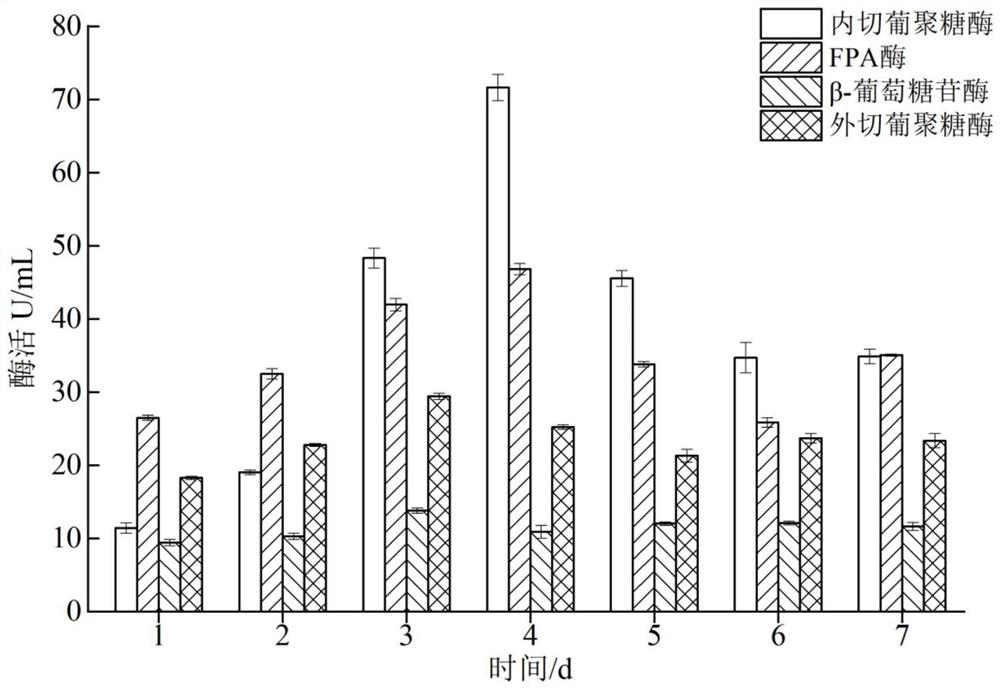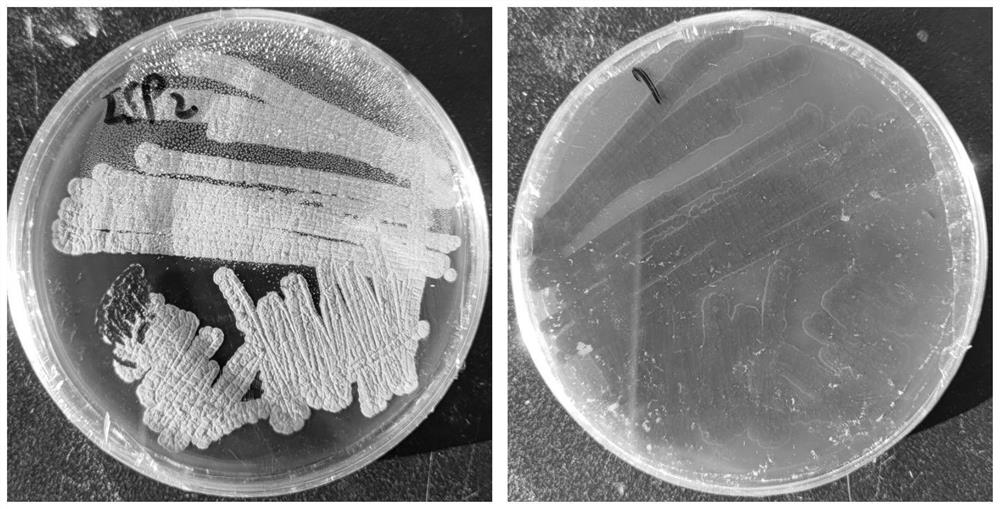Cellulose degrading bacterium and application thereof
A technology of cellulose degradation and cellulose, applied in the direction of bacteria, microorganisms, biochemical equipment and methods, etc., can solve the problem of low efficiency of straw degradation
- Summary
- Abstract
- Description
- Claims
- Application Information
AI Technical Summary
Problems solved by technology
Method used
Image
Examples
Embodiment 1
[0020] Weigh 10g of straw compost samples (composted from the Northeast Institute of Geography and Agroecology, Chinese Academy of Sciences) in different sampling periods, add them into 90ml of sterilized ultrapure water, shake at 30°C and 180rpm for 30min, mix well and then let stand, take 1ml of suspension The solution was serially diluted, and 70 μl of the diluted suspension was spread on the CMC solid medium, cultured in a 30°C incubator for 5 days, and the colonies on the CMC solid medium were streaked and purified repeatedly for 5 to 8 times, and the purified single The strains were cultured on CMC solid medium for 3 days and then stained with Congo red. After washing with 1mol / L NaCl, those with transparent circles on the plate were possible cellulose-degrading bacteria, and one strain with obvious cellulose-degrading transparent circles was screened. strain, numbered as strain WF-10.
[0021] Molecular biological identification of strain WF-10:
[0022] The culture of...
Embodiment 2
[0025] Determination of Cellulase Activity of Streptomyces ansochromogenes WF-10
[0026] Inoculate the Streptomyces ansochromogenes WF-10 into the fermentation enzyme production medium (fermentation enzyme production medium: CMC-Na 10g, NaCl 0.1g, KH 2 PO 4 1.0g, NaNO 3 2.5g, MgSO 4 ·7H 2 O 0.3g, CaCl 2 0.1g, FeCl 3 0.01g, distilled water 1000mL), shake culture at 30°C and 200rpm, take a sample every 24h, centrifuge at 8000rpm for 5min, and the supernatant is the crude enzyme solution.
[0027] A. Determination of endoglucanase activity: Take 4 clean test tubes of the same specification, 1 test tube as blank, and the remaining 3 as test tubes. Accurately weigh 1.5mL of 1% CMC-Na standard solution, add to 4 test tubes respectively, add 0.5mL diluted crude enzyme solution to 3 test tubes respectively, shake well and place 4 test tubes at 50℃ React in a water bath for 30 minutes. After taking it out, add 0.5mL of boiled inactivated diluted crude enzyme solution to th...
Embodiment 3
[0033] To verify the high efficiency and practical applicability of Streptomyces ansochromogenes WF-10, liquid fermentation and solid fermentation experiments were carried out.
[0034] 1. Degradation of straw by liquid fermentation: Inoculate 5 mL of Streptomyces ansochromogenes WF-10 bacterial liquid into the optimized liquid fermentation medium (optimized liquid fermentation medium formula: 15 g of corn straw powder, NaCl 0.1 g.KH 2 PO 4 1.0g, (NH 4 ) 2 SO 4 4g, MgSO 4 ·7H 2 O 0.3g, CaCl 2 0.1g, FeCl 3 0.01g, distilled water 1000mL), with the liquid fermentation medium not inoculated with bacteria liquid as a control, after culturing for 7 days at 30°C and 180rpm, the supernatant was discarded by centrifugation, and the straw was washed repeatedly with dilute acid solution, and then washed with distilled water After centrifugation, the relative degradation rate of straw was determined by weight loss method.
[0035] 2. Degradation of straw by solid-state fermen...
PUM
 Login to View More
Login to View More Abstract
Description
Claims
Application Information
 Login to View More
Login to View More - R&D
- Intellectual Property
- Life Sciences
- Materials
- Tech Scout
- Unparalleled Data Quality
- Higher Quality Content
- 60% Fewer Hallucinations
Browse by: Latest US Patents, China's latest patents, Technical Efficacy Thesaurus, Application Domain, Technology Topic, Popular Technical Reports.
© 2025 PatSnap. All rights reserved.Legal|Privacy policy|Modern Slavery Act Transparency Statement|Sitemap|About US| Contact US: help@patsnap.com



